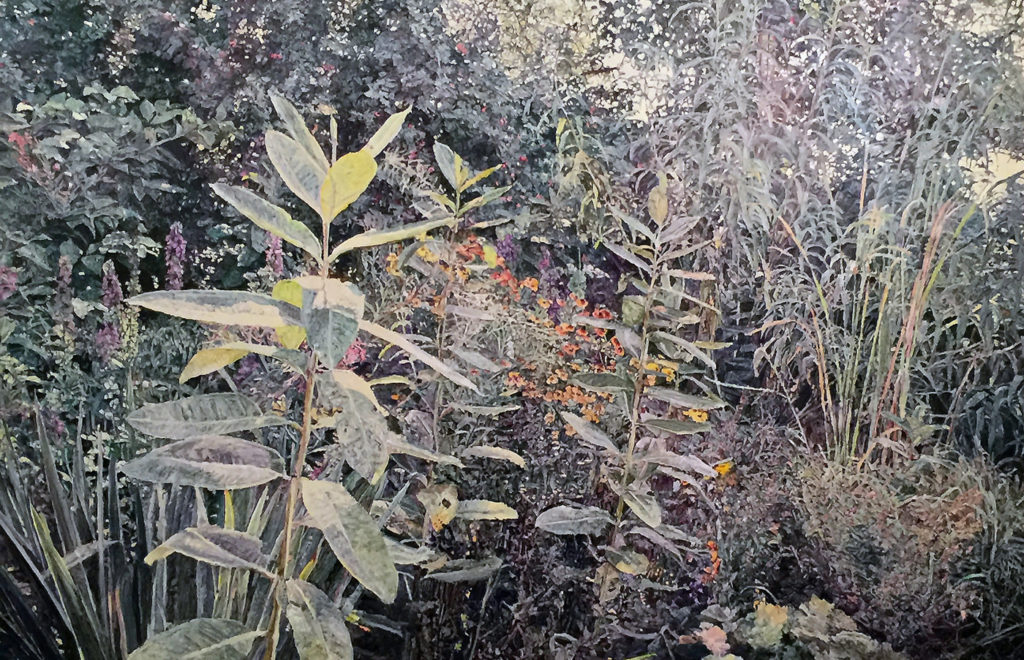Paintings of Nature > It took William Nichols some time to develop a visual vocabulary that accurately expressed what he saw and experienced emotionally in nature. However, once discovered, the creativity — and paint — flowed in ways that continue to enthrall viewers and collectors.

Viewing a painting by William Nichols is like being engulfed by a wave of color, energy, pattern, and light that could be overwhelming. Nichols typically works on a large scale, and his paintings have such an arrangement of color and active brushstrokes as to make even the most mundane and innocent locations absolutely magnificent.

At first glance, paintings such as “Wild Summer Grapes” are so packed full of spots, shapes, and details of color that they almost appear abstract. However, the discerning eye (and brain) begins to pull together larger groupings of forms. Only after extended consideration does the spatial context emerge. Other works, such as “Saratoga Stream” and “Grape, Leaves & Orange Lillies” are more representational, but equally display Nichols’ mastery of color application and balance.


Of his experiences, Nichols writes, “As a young painter, I saw the landscape for its potential as both a conveyor of visual beauty and a messenger of meaningful experience. The difficulty was defining what was special about it for me and then finding a way of orchestrating the visual vocabulary to meet what I was seeing and feeling. The conclusions I came up with were, I think, largely intuitive and it is only over a number of years that I have come to understand more fully what those qualities were and what they mean to me.”







To learn more, visit CK Contemporary.
This article was originally written by Andrew Webster in 2017 and featured in Fine Art Today, a weekly e-newsletter from Fine Art Connoisseur magazine. To start receiving Fine Art Today for free, click here.








